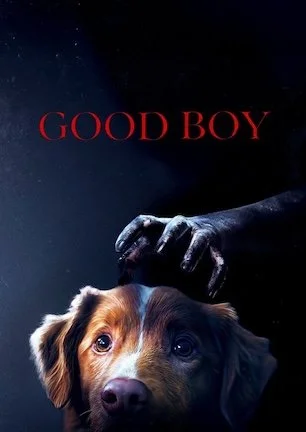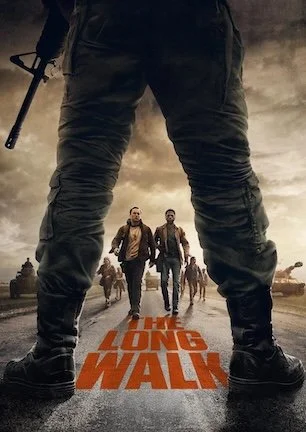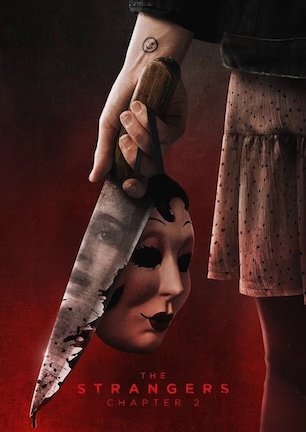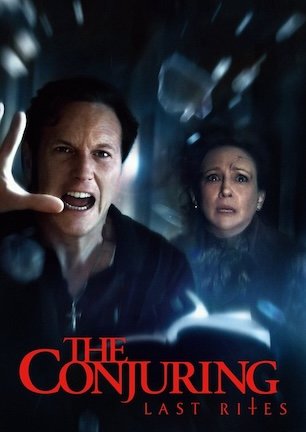Studio: IFC/Shudder
Director: Ben Leonberg
Writer: Alex Cannon, Ben Leonberg
Producer: Kari Fischer, Ben Leonberg
Stars: Indy, Shane Jensen, Arielle Friedman, Larry Fessenden, Stuart Rudin, Hunter Goetz, Anya Krawcheck
Review Score:
Summary:
A devoted dog becomes concerned for his ill owner after they move to a remote family home haunted by a supernatural entity.
Review:
The concept behind “Good Boy” sounds like a gimmick, and it is, although there’s a sentimental sincerity motivating the movie that makes it more than a cheap trick for grabbing attention. “Good Boy” tells a ghost story where a terminally ill man, Todd, retreats to a remote woodland home that has a family history of being haunted. The difference between this and every like-minded tale of escalating paranormal activity plaguing a person living alone in a forest is that this movie takes place entirely from the perspective of Todd’s loyal dog Indy.
A method that director Ben Leonberg uses to focus squarely on Indy involves keeping the camera low and keeping the human actors, of which there are only five, unseen or in silhouette. During the last act, the audience finally gets direct looks at Todd’s bearded face. Until then, Todd, as well as his sister, neighbor, and the doctor he briefly interacts with, are nothing more than torsos, legs, and voices that often fade into mumbles.
This technique helps give “Good Boy” its distinctly dog-centric style, though it comes with a caveat. Since we never see anyone’s mouth move, limited dialogue appears to have been recorded separately. Almost entirely devoid of ambient noise, the cast’s cleanly recited lines sound overly rehearsed as a result. Instead of acting “with” the dog, they’re likely reading into a microphone directly from a printed script, and that air of artificialness bites into the movie’s capacity to present itself as immersive fantasy rather than a filmed play. Instances of people speaking are infrequent, and often inconsequential, so even though their intrusions are noticeable, it’s still easy for Indy’s innocent appeal to bring viewers back into the slowly unfolding horror of an evil entity stalking Todd and his furry companion.
Not only is “Good Boy” a true indie film by virtue of being modestly made mostly in a single location with never more than two humans onscreen at once, it’s also a movie that could only exist in the digital age of 21st-century cinema. A bold producer might have been able to make the movie in the ‘70s or ‘80s when animal-centric horror hit its peak. But rolling expensive film through a loud, cumbersome camera seems like an economically unsustainable way to burn cash while waiting for an untrained dog to stop being distracted long enough to do what you want.
After an opening montage of home movies featuring Indy playing as a puppy, even viewers who aren’t inherently animal lovers should see his character as a lovable, compassionate creature. The rest of the movie does a remarkable job of continuing to paint Indy as a genuine personality whose visible concern for his ailing owner becomes emotionally endearing. If nothing else, “Good Boy” is a terrific achievement in editing for its ability to carefully maneuver around footage that undoubtedly included many minutes of Indy wandering away, losing interest in his commands, and looking directly into the lens. At times, Indy morphs into a reality-show participant who somehow stops seeing the camera to seemingly act naturally, as if he’s just going about his business without a care for any crewmembers who might be observing just out of frame.
There are a couple of moments of minor trauma for the dog, like a frustrated Todd roughly wrestling him away when he doesn’t want to be bothered, and a hand dragging Indy under a bed. Neither of these are necessarily examples of abuse, though someone might wonder whether it’s worth temporarily manhandling a baffled animal for the sake of snatching five seconds of footage. Otherwise, editing operates in tandem with visual FX so that when Indy jumps out a window or gets snared in a fox trap, you can see where the cuts are to give the illusion of Indy experiencing distress without him being in any real danger.
As adorable as Indy can be, being a dog hamstrings how far he can carry a feature-length film as its nonverbal hero. No matter how “good” an animal’s acting is, they’re inhibited by a naturally narrow range. In Indy’s case, his performance primarily consists of staring with an expression that can alternately be read as confused or worried depending on which scene the reaction shot is used for. Indy’s stunts are CGI-enhanced, meaning that for most of the movie, he doesn’t really have a whole lot to do apart from moving his head and trotting toward noises.
“Good Boy” is highly unlikely to see a sequel or any imitators because, even at only 73 minutes, this is about as far as the premise can be reasonably stretched before running its course. First to the punch, “Good Boy” rises above its gimmick label by having an open-to-interpretation ending that adds thematic heft to what could otherwise be a one-and-done stunt. The movie might not be relevant in years to come, but it should be remembered for trying something out of the ordinary, and for forming its frame around enough substance to prevent the film from merely being a trite exercise in cute canine creeps.
Review Score: 65






Compared to the pointless pap Winnie and Mickey are put through nowadays, crude Scrooge ends up looking as noble as Charles Foster Kane.